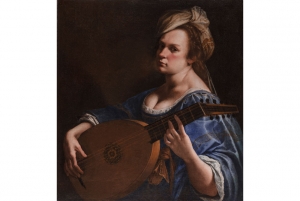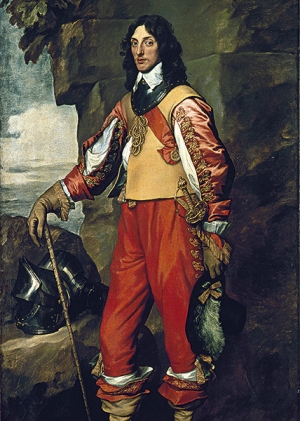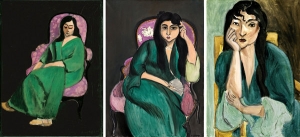|
Displaying items by tag: nicolas poussin
“Poussin and God” is one of a three-part series of exhibitions through which the Musée du Louvre is showcasing the art of the seventeenth century. On show at the museum’s Hall Napoléon through June 29, 2015, “Poussin and God” marks the 350th anniversary of the death of Nicolas Poussin in 1665.
According to the Musée du Louvre, although Poussin is the greatest French painter of the seventeenth century and is considered by some as the greatest of all time, he is less well known today than Watteau, Delacroix, Monet, or Cézanne. The Musée du Louvre is aiming to rectify the situation by proposing a fascinating yet accessible entry point to the work of the great French master.
A masterpiece by Nicolas Poussin, one of the greatest artists of the 17th century, will be displayed at the Walker Art Gallery from March 6 to June 7, 2015.
The painting is on tour from the Fitzwilliam Museum in Cambridge, with the Walker Art Gallery providing the only opportunity to see the work in the north of England.
"Extreme Unction," or "final anointing," depicts a powerful and moving scene in which a family gathers at the bedside of a dying man as he is administered his last rites.
Sandra Penketh, Director of Art Galleries, said: “The Walker Art Gallery is delighted to show our visitors this masterpiece. It is one of the most remarkable paintings Poussin ever produced. The picture’s composition, detail and its sensitive portrayal of such an intimate moment in life will enthral visitors.”
Rembrandt couldn’t decide whether to depict a rich man who commissioned a portrait standing up, or on his horse. And when he did determine how to show the wealthy gentleman, on horseback, he painted over the original image of the “sitter” standing up. Both portraits appear when the painting is x-rayed. Was canvas so expensive, or did Rembrandt not want a mere commissioned picture crowding out the personal works in his studio?
Nicolas Poussin admired the art of antiquity, which came down to him (and to us) mostly as sculpture. This may be why Poussin’s The Triumph of Pan seems like a sculptural frieze in paint, an odd paradox of permanence and perpetual movement.
Mars and Venus was well-known to Nicolas Poussin scholars. But for more than a century, the oil on canvas was considered either a fake or a poor attempt by the French painter’s studio to imitate the style of the classicist master. It barely left the Louvre’s stock room.
Now new research led by Pierre Rosenberg, the director of the Louvre from 1994 to 2001, proves that Mars and Venus is indeed the real thing–a discovery which makes it the 40th Poussin in the institution’s collection. The Figaro reports that under the piece’s darkened varnish, the conservation team in charge of a recent analysis discovered that the top of the canvas had been cut off, and the removed strips used to enlarge the piece horizontally.

The Wadsworth Atheneum Museum of Art in Hartford, Connecticut, has acquired a rare self-portrait by the Italian Baroque painter Artemisia Gentileschi, who is widely regarded as the most important female artist before the modern period. The institution purchased “Self-Portrait as a Lute Player” from Christie’s New York using funds from the recently established Charles H. Schwartz Fund for European Art. It is the first painting by a female artist of the Baroque period to enter the Wadsworth Atheneum’s permanent collection.
“Self-Portrait as a Lute Player” is one of only three uncontested self-portraits by Gentileschi that are known to exist. The work was most likely commissioned by the Grand Duke Cosimo II de’Medici and was recorded in the Medici collection as early as 1638. The painting’s whereabouts remained a mystery until it surfaced in a private collection in 1998. It was subsequently featured in major Gentileschi exhibitions around the world. The Wadsworth’s recent acquisition expands the museum’s already-stellar collection of Baroque masterpieces, which includes works by Caravaggio, Claude Lorrain, and Nicolas Poussin.
“Self-Portrait as a Lute Player” will make its public debut alongside works by Fra Angelico, Caravaggio, Artemisia’s father Orazio Gentileschi, Claude Monet, and Pierre-Auguste Renoir in 2015 following a reinstallation of the museum’s European collections in the Morgan Memorial Building, which is undergoing an extensive renovation.
On May 23, 2013, after a two and a half year renovation, the Metropolitan Museum of Art in New York unveiled 45 updated and expanded galleries of European paintings. The new space, which has increased by about a third, boasts 600 works of art dating from 1250 to 1800. Arranged in chronological order and grouped by country, the collection includes the Met’s renowned holdings of early Dutch, French, and Italian paintings.
The reimagined European painting galleries include 23 high profile loans, mainly from private collections. Works by Jan Van Eyck (1395-1441), Nicolas Poussin (1594-1665), Sandro Botticelli (1445-1510), and Peter Paul Rubens (1577-1640) will be on view for at least six months thanks to the generosity of the Met’s trustees, and patrons.
The Met’s European painting galleries have not been fully renovated since the early 1950s and this is the first overall reinstallation of the collection since 1972.

A selection of oil paintings from Russia’s Hermitage Museum will be on view at Houghton Hall in England from May 17, 2013 through September 29, 2013. Great Britain’s first prime minister, Sir Robert Walpole, assembled the collection during the first half of the 18th century and built Houghton Hall to house the works. Paintings from Russian and American collections will complement the works, which are returning to England for the first time in 230 years.
Walpole built Houghton Hall, which now belongs to Lord Cholmondeley, one of his direct descendants, between 1722 and 1735. In 1779,When Walpole’s grandson was in need of money, he sold the majority of his grandfather’s collection to Catherine the Great for nearly $61,500. Approximately 75 of the sold works are returning to Houghton Hall for the exhibition including paintings by Rembrandt (1606-1669), Anthony van Dyck (1599-1641), Nicolas Poussin (1594-1665), and Diego Velázquez (1599-1660).
While a handful of the paintings have been on view in England since their sale in the 18th century, none of them have returned to Houghton Hall. Designed by the foremost architects of Walpole’s time, James Gibbs and Colen Campbell, Houghton Hall’s lavish interior was decorated by the eminent architect and furniture designer William Kent. Walpole spared no expense and Houghton Hall remains as one of the finest examples of Palladian architecture in England.
On May 23, 2013, after a two and a half year renovation, the Metropolitan Museum of Art in New York will unveil 45 updated and expanded galleries of European paintings. The new space, which has increased by about a third, boasts 600 works of art dating from 1250 to 1800. Arranged in chronological order and grouped by country, the collection includes the Met’s renowned holdings of early Dutch, French, and Italian paintings.
The reimagined European painting galleries include 23 high profile loans, mainly from private collections. Works by Jan Van Eyck (1395-1441), Nicolas Poussin (1594-1665), Sandro Botticelli (1445-1510), and Peter Paul Rubens (1577-1640) will be on view for at least six months thanks to the generosity of the Met’s trustees, and patrons.
The Met’s European painting galleries have not been fully renovated since the early 1950s. When the new galleries open next week, the Met will offer various walking guides as well as online versions of the tours.

One of the most significant artists of the 20th century, Henri Matisse (1869–1954) is best known for his use of color and fluid, innovative forms. A leading figure in modern art, the French artist defined the Fauvist movement, but defied classification. The works of Nicolas Poussin, Édouard Manet, Auguste Rodin, Paul Gauguin, Paul Cézanne, and Jean-Baptiste-Siméon Chardin inspired Matisse and he communed with groundbreaking artists such as Camille Pissarro, André Derain, and Gertrude Stein.
The Metropolitan Museum of Art’s exhibition Matisse: In Search of Painting opens on December 4 and explores the evolution of Matisse as a painter. Matisse worked rigorously, often painting the same scene and subject over and over again to gauge his own progress and compare various techniques, a process he developed during his academic training.
In Search of Painting features just 49 vibrant canvases but spans Matisse’s entire career. Organized by Rebecca Rabinow, a curator of modern and contemporary art, the exhibition places the works in pairs and groups by subject to illustrate Matisse’s methodical process. In the 1930s, Matisse began having photographs taken at various stages of each painting to document their evolution. Three of the finished canvases along with their accompanying photographs will also be on view. The juxtaposition illustrates Matisse’s own self-awareness and the arduous process that led to each finished canvas.
Matisse: In Search of Painting will be on view through March 17, 2013.
|
|
|
|
|